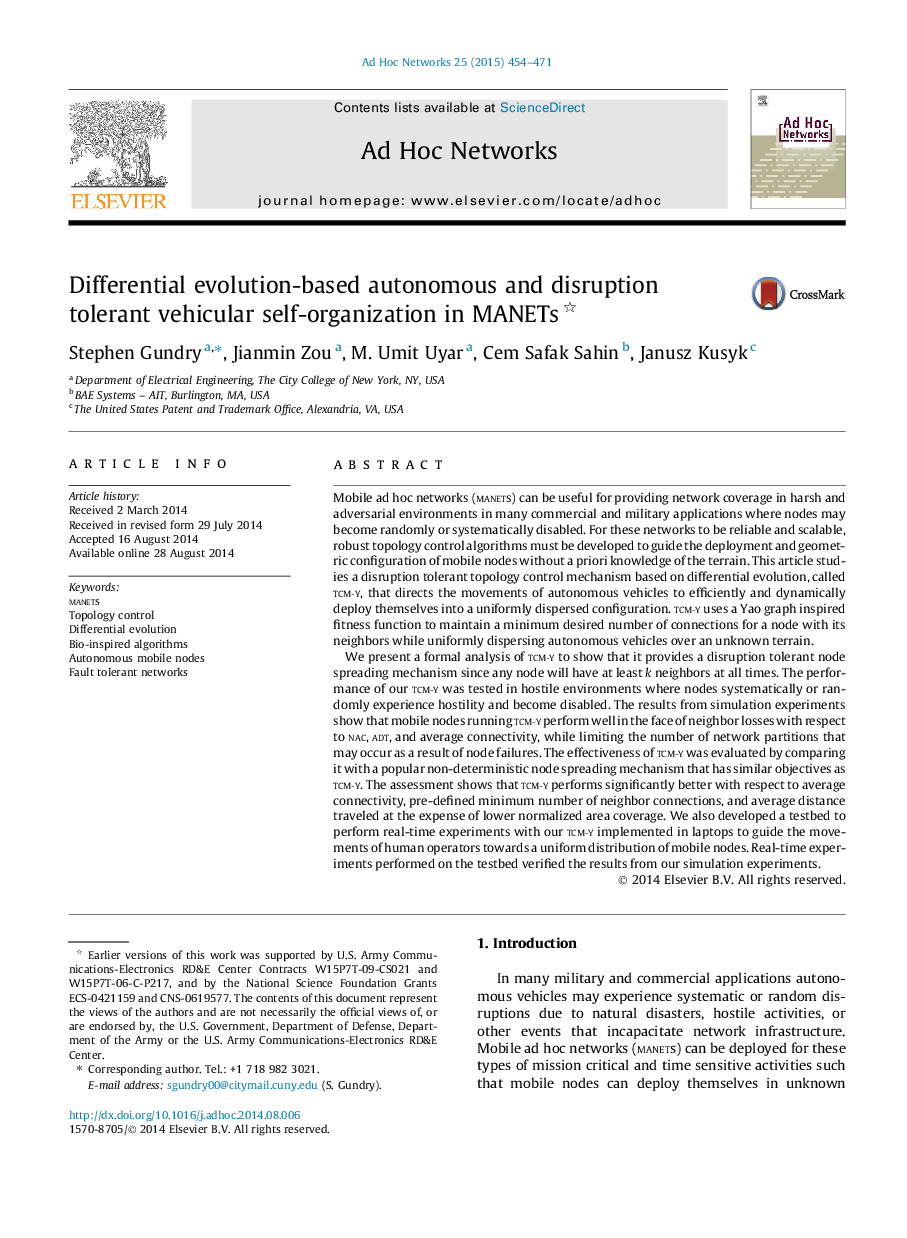| کد مقاله | کد نشریه | سال انتشار | مقاله انگلیسی | نسخه تمام متن |
|---|---|---|---|---|
| 445355 | 693180 | 2015 | 18 صفحه PDF | دانلود رایگان |

Mobile ad hoc networks (manets) can be useful for providing network coverage in harsh and adversarial environments in many commercial and military applications where nodes may become randomly or systematically disabled. For these networks to be reliable and scalable, robust topology control algorithms must be developed to guide the deployment and geometric configuration of mobile nodes without a priori knowledge of the terrain. This article studies a disruption tolerant topology control mechanism based on differential evolution, called tcm-y, that directs the movements of autonomous vehicles to efficiently and dynamically deploy themselves into a uniformly dispersed configuration. tcm-y uses a Yao graph inspired fitness function to maintain a minimum desired number of connections for a node with its neighbors while uniformly dispersing autonomous vehicles over an unknown terrain.We present a formal analysis of tcm-y to show that it provides a disruption tolerant node spreading mechanism since any node will have at least k neighbors at all times. The performance of our tcm-y was tested in hostile environments where nodes systematically or randomly experience hostility and become disabled. The results from simulation experiments show that mobile nodes running tcm-y perform well in the face of neighbor losses with respect to nac, adt, and average connectivity, while limiting the number of network partitions that may occur as a result of node failures. The effectiveness of tcm-y was evaluated by comparing it with a popular non-deterministic node spreading mechanism that has similar objectives as tcm-y. The assessment shows that tcm-y performs significantly better with respect to average connectivity, pre-defined minimum number of neighbor connections, and average distance traveled at the expense of lower normalized area coverage. We also developed a testbed to perform real-time experiments with our tcm-y implemented in laptops to guide the movements of human operators towards a uniform distribution of mobile nodes. Real-time experiments performed on the testbed verified the results from our simulation experiments.
Journal: Ad Hoc Networks - Volume 25, Part B, February 2015, Pages 454–471